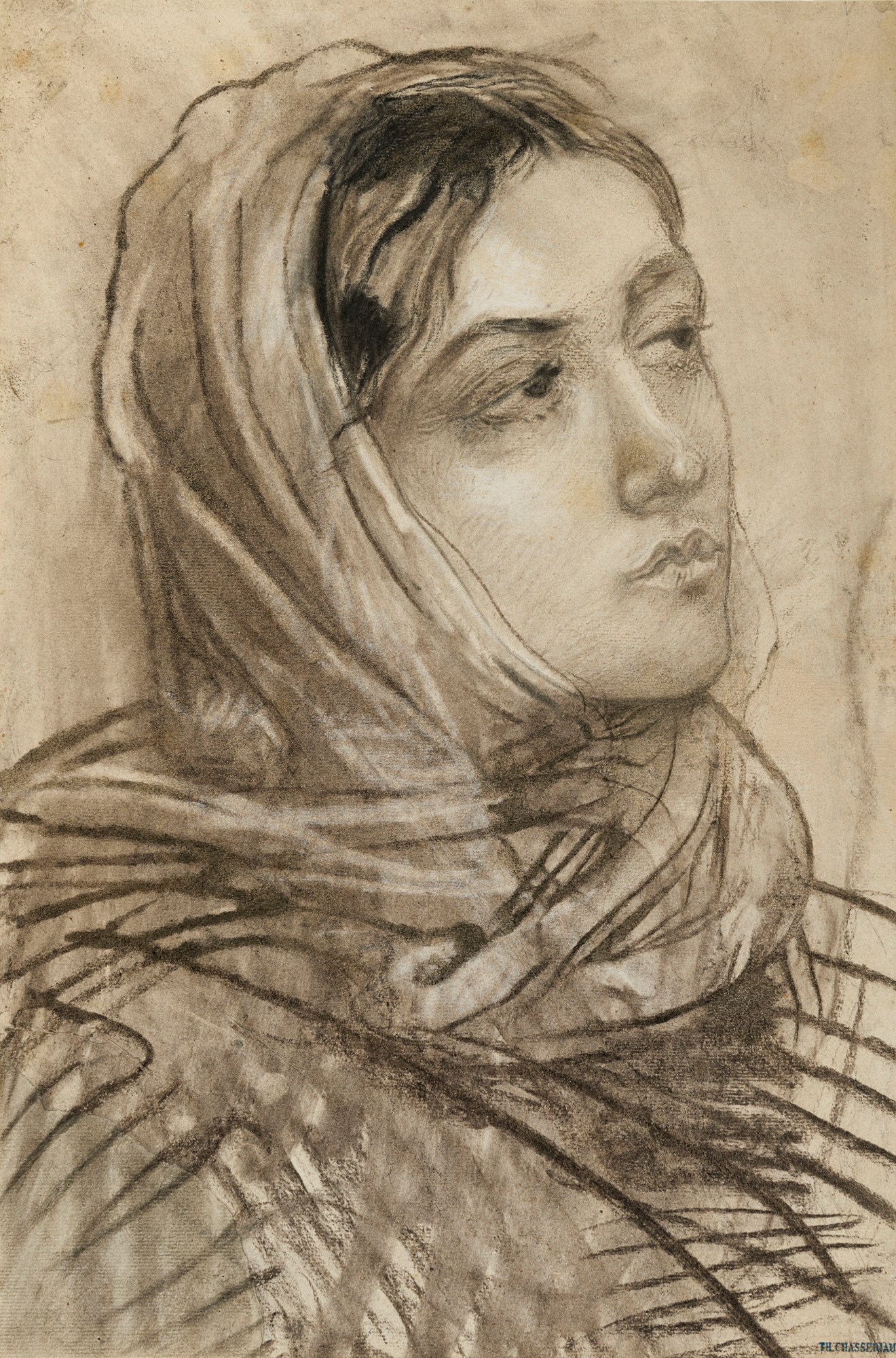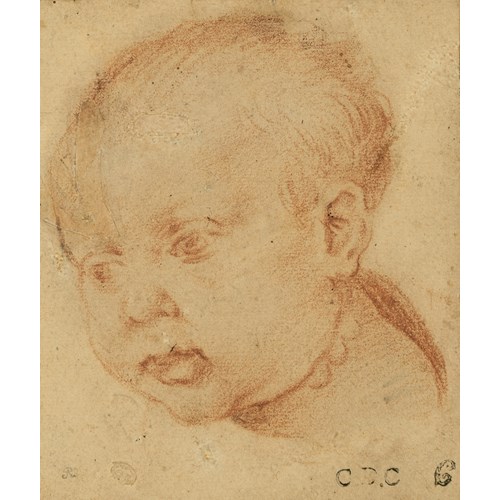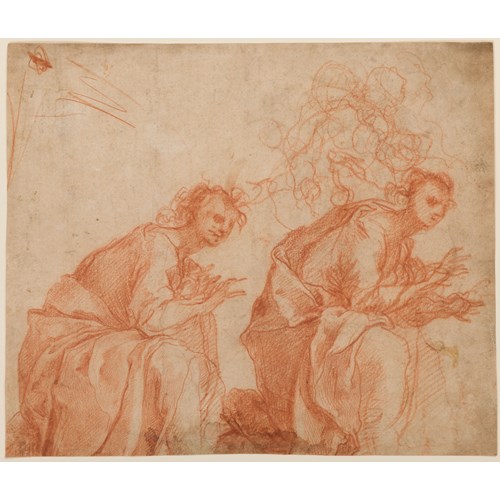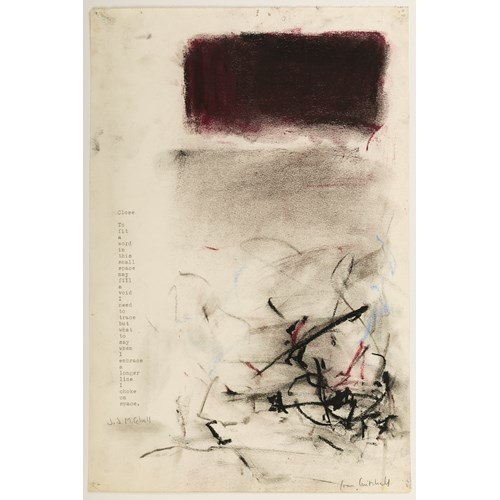The present sheet is known in two autograph versions, although the other drawn version of this head is less finished and shows much less of the sitter’s clothing. As Louis-Antoine Prat has noted, it is rare to find two drawings by Chassériau of the same subject or sitter, and only six or seven examples are known, including portrait drawings of the artist’s brother Ernest and his favourite model Marie Cantacuzène.
As the 19th century writer and art critic Théophile Gautier noted of the women in the artist’s paintings, ‘The only modern aspect of Chassériau’s heads are the eyes, imbued with a dreamy fixity or drowned in a nostalgic languor…these figures, with their dull serenity and disdainful passivity, are reminiscent of the beautiful Greek slaves captive at the court of some barbarian king…’ While the model for the present sheet was previously identified as one of Chassériau’s two sisters Adèle or Aline, it is more likely to have been his close friend and muse, Marie Cantacuzène (1820-1898), a Romanian princess whom the artist first met around 1854 or 1855, when he lived near her on the Avenue Frochot in Paris. Born Maria Cantacuzino in 1820 in Horodnitzeni in Moldavia, she had arrived in Paris in 1850, and was estranged from her second husband, Prince Alexander Kantakuzen (from the Russian branch of her family), whom she had married in 1839. Gallicizing her name, she settled happily in Paris, despite the strong disapproval of her family in Romania.
Princess Marie Cantacuzène was to model for a number of Chassériau’s paintings. The artist’s great biographer, Léonce Bénédite, noted that ‘the feeling which Chassériau might have had for Princess Cantacuzène had no resemblance to those which he had for other women…The princess is not a beautiful woman, but she has a very interesting physiognomy with her heavy hair arranged in bandeaux nodules, her lovely sweet and serious eyes, her small fresh and lovely mouth, her elongated and thin face, her pensive air, the distinction of her whole figure and her slightly melancholic grace. What Chassériau found in her… and what explains his true adoration, is a soul.’ It was through Chassériau that, in 1856, Marie Cantacuzène met the painter Pierre Puvis de Chavannes. The two were to become lifetime companions, eventually marrying in 1897, when both were in their seventies. As she had with Chassériau, Marie Cantacuzène posed often for figures in paintings by Puvis de Chavannes.
Provenance: Probably the Chassériau atelier sale, Paris, Hôtel Drouot, 16-17 March 1857
Shepherd Gallery, New York, by 1984
Anonymous sale, Paris, Hôtel Drouot, 27 November 1987, lot 2 (as a portrait of the artist’s sister)
Galerie Schmit, Paris, in 1988
Robert and Nadine Schmit, Paris
Thence by descent.
Literature: New York, Shepherd Gallery, Twenty Nineteenth Century Works of Art: Paintings, Drawings and Sculpture, exhibition catalogue, 1986, unpaginated, no.9 (as a portrait of the artist’s sister); Louis-Antoine Prat, Cahiers du dessin français. Théodore Chassériau 1819-1856: Dessins conservés en dehors du Louvre, Paris, 1988, p.27, no.203 (not illustrated).
Exhibition: New York, Shepherd Gallery, French Nineteenth Century Paintings, Drawings, Pastels and Watercolors, Spring 1984, no.40; New York, Shepherd Gallery, Twenty Nineteenth Century Works of Art: Paintings, Drawings and Sculpture, 1986, no.9; Paris, Galerie Schmit, Maîtres français: XIXe-XXe siècles, 1988, no.16 (titled Portrait de la sœur de l’artiste, and with provenance from the Cantacuzène family, Paris).
More artworks from the Gallery








_T637286175632885091.jpg?width=500&height=500&mode=pad&scale=both&qlt=90&format=jpg)
